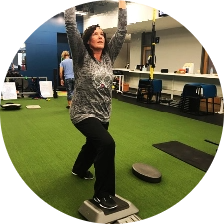Services
Experience Knee Pain Treatment

Knee pain is common across all age groups. It can come suddenly, often as a result of injury, or it can also develop over time from just mild discomfort.
In some cases, certain medical conditions may cause knee pain as well.
Although several kinds of this pain respond well to self-care, knee pain therapy, or even knee braces, in more severe cases, surgery may be required to address the issue.
Causes of Knee Pain
The following are the most common causes of knee pain. They can be classified into injuries, mechanical problems, arthritis, and other issues:
Types of Knee Injuries
Bursitis
Bursae are the fluid-filled sacs located near muscles, joints, and bones that facilitate movement by reducing the friction. In the knee, the bursae is located above the joint, just under the skin. Pain, swelling, and inflammation can occur when there is repeated bending or a fall.
This condition is called prepatellar bursitis or the preacher’s knee.
Fractures
Accidents or falls can cause the bones in the knee, including the kneecap, to break. In some cases, weakened bones because of conditions like osteoporosis can cause fractures in the knee even with just a misstep.
Patellar Tendonitis
Tendons are the thick and fibrous tissues that connect muscles to bones. Tendonitis is the inflammation of these tissues. This happens when the patellar tendon, the tendon that connects the kneecap to the shinbone, is injured. This condition is more common with athletes who run, kick, or jump.
ACL Injury
The anterior cruciate ligament or ACL is one of four ligaments that connect the thigh bone to the shinbone. A tear in this ligament can cause pain in the knee region. This condition is particularly common in athletes who play sports that require them to immediately change directions.
Torn Meniscus
The rubbery cartilage that acts as a shock absorber between the shinbone and the thigh bone is called the meniscus. A tear in this tough tissue can cause pain in the knee. This can happen when a sudden twist occurs in the knee region while it is bearing weight.
Types of Mechanical Problems
Dislocated kneecap
Also called patellar dislocation, this happens when the kneecap or the small triangular bone in the middle of the knee joint slides out of place. The patella is usually displaced to the outside of the knee. In some cases, the dislocation may be readily visible. This can cause pain and swelling.
Foot or Hip Pain
Pain elsewhere in the body, including pain in the hip or foot areas, can force an individual to alter the way they walk. This can eventually lead to knee pain because of excessive unnecessary stress on the knee joint.
Loose Body
When there is injury or degeneration of bone or cartilage, loose pieces may interfere with the movement in the knee joint causing pain or discomfort.
Iliotibial Band Syndrome
The Iliotibial band is the tough band of tissues extending from outside the knee to outside the hip. In some cases, this band becomes tight enough that it begins to rub against the outer part of the thigh bone. This is more common in cyclists and distance runners.
Types of Arthritis
Here are the types of arthritis that usually cause knee pain:
- Osteoarthritis – This is the most common type of arthritis. Age and use can cause the deterioration of the cartilage in the knees.
- Rheumatoid arthritis – This autoimmune condition causes knee pain when the immune system of the body attacks the knee joints.
- Septic arthritis – Infection in the knee joint can lead to septic arthritis. It is usually accompanied by fever. This can cause pain, swelling, redness, and severe damage to the cartilage in the knee.
- Gout – This happens when uric acid levels cause crystals to develop in the knee joint.
- Pseudogout – Similar to gout, crystals that have calcium develop in the joint fluid. This often affects the knee joint.
Diagnosing Knee Pain
MRI is one of the most effective diagnostic procedures for knee pain. Doctors use this over the x-ray because it gives a clear picture of the bones, the cartilage, the tendons, the muscles, the ligaments, and even some of the blood vessels in the knee.
An MRI scan can readily identify if there is damaged cartilage, infections, bone fractures, torn tendons, torn ligaments, and even tumors. It can also determine if surgery is needed.
Treating Knee Pain
Pain in the knee is generally treated using the following methods:
- Medication – Doctors may prescribe medication to relieve pain and treat conditions such as rheumatoid arthritis or gout.
- Injection – Doctors sometimes recommend injections of corticosteroids, hyaluronic acid, or platelet-rich plasma to address arthritis, lubricate joints, or promote healing, respectively.
- Surgery – Injuries and other conditions may require knee surgery which includes the following options:
- Arthroscopic surgery
- Partial knee replacement
- Total knee replacement
- Osteotomy
Although these traditional treatment options may alleviate knee pain in the short-term, they may not be able to address the underlying cause. This can result in recurring pain in the knee. Additionally, these methods reportedly only work 45% of the time.
For lasting knee pain relief, we recommend one or more of the following treatment options we offer:
Dry Needling
Through the use of several monofilament needles, trigger points or local contractures in the muscle tissue are treated safely and virtually painlessly. This is an especially effective treatment option for musculoskeletal representations.
Deep Muscle Stimulation
Mechanical vibrations penetrate the muscle tissue, improving lymphatic flow, circulation, and even tissue regeneration. The vibrations also improve the lactic acid cycle, which alleviates one of the most common pain causes.
Heat and Cold Therapy
These treatments may be used by themselves or together. They alter blood flow and effectively relieve pain. Cold treatment also reduces swelling, while heat treatment relaxes muscles and promotes the healing of damaged tissues.













